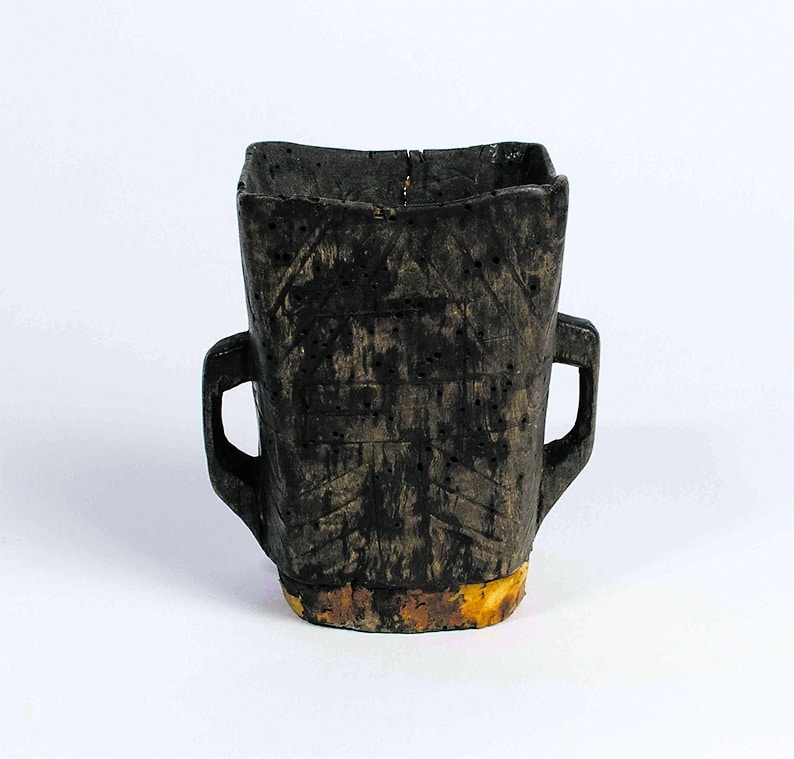According to an ancient tale, the chieftain, Bricriu, prepared a great feast to which he invited all the Ulster warriors and their women. The feast was sumptuous, consisting of beef broth, roast boar, salmon, honey cakes and many other dishes; to drink, the guests had the finest of ale, the choicest of mead and the rarest of wines. Bricriu promised the champion’s portion to the Red Branch knight who would prove himself the bravest, a challenge which naturally led first to bitter arguments and then to bitter blows.
In another story, ‘The Wooing of Éadaoin’, we read how the High King Eochaidh made a great feast at Tara at which mead, fine wines and barrels of ale were served. The two tales tell us the kind of food and drink served at princely banquets.
Mead was a favourite drink in ancient Ireland, said to be both potent and delicious. It was made from honey, clear sparkling water and aromatic herbs. ‘Bragget’, made by fermenting ale and honey together, was also much enjoyed, as it is frequently mentioned. Bees were kept in very great numbers and to have a surplus of honey for mead-making was highly desirable. St. Bridget, that redoubtable woman who knew how to influence prelates and princes, is said to have given the King of Leinster a cup of mead to drink when he came to visit her convent in Kildare. it was of unsurpassed quality and no doubt very strong as well. As a result of her hospitality the king gave her a tract of land and gifts she needed for her work among the sick and needy. She was noted for the excellence of her food, and had the reputation of brewing the best ale in Ireland. She was not the only one of the early saints who kept a good cask or two. St. Patrick is said to have had his favourite brewer travel Ireland with him in his missionary work.

Anyone who wished to do so was free to brew his own ale, but the Brehon laws laid down regulations for the sale of ale and for the proper running of ale-houses. Early monastic settlements were sizeable, including, as they did, not only the refectory, kitchens and dormitories for the monks, but workshops, bakeries and accommodation to house lay workers and their families, visiting penitents, students, and indeed anyone who might seek shelter. It was laid down, that on feast days, laymen and clerics should get equal quantities of food; the monks were allowed three pints of ale, with six for the laymen.
Much of the early ale was made from malted grain – oats, wheat or barley – together with spring water and honey. Before the introduction of hops in the 16th century, beer, like ale, made with a simple infusion of fermented malt, was flavoured with aromatic plants. Oak bark is said to have been used for this purpose, as well as buck beans. It was not until around 1780 that beer began to be produced on a commercial scale by small breweries, made from a mixture of malt, grain, water, sugar, yeast and hops. Practically every town had its brewery, some of which were still open in the early 20th century. Examples in West Cork included McCarthy’s of Skibbereen and Deasy’s of Clonakilty, who made a famous stout called Wrestler (pronounced Wrastler).
The ancient Irish drank a cider called ‘nenadmin’ made from crab apples, and also a drink called ‘fraochán’ made from whortleberries and blackberries.
From earliest times there was considerable trade with the Continent, particularly France and Spain. Furs and hides were exported and back came cargoes of wine and brandy, as these drinks were very popular among wealthy merchants.
One story tells of how a 13th century West Cork chieftain, Amhlaoibh Ó hEidirsceoil (O’Driscoll today), was given his nickname. One day, as a young boy, he was down at the harbour watching the ships when he was abducted by a rival chieftain and handed over to the crew of a wine ship from Gascony as a pledge of payment for cargo. He was taken to France and put to work in the vineyards, thereby giving credence to the old belief that fruit grew without blemish if the vines were tended by those of noble blood. Later the youth returned to Ireland and ever afterwards bore the nickname ‘the Gascon’.
Not all drink consumed was come by honestly. Frequently the Irish chieftains levied ‘black rents’ on the Pale (the district around Dublin). In 1444, Eoghan O’Neill, Lord of Tyrone, plundered the town of Dundalk and demanded sixty marks and two tons of wine in return for not destroying the town by fire – a demand that was quickly met by the frightened townsfolk.
A brisk trade in smuggling wine and fine brandy along the western seaboard lasted until well into the 19th century. Smuggling was a hazardous occupation, but for some it was a way of surviving and even of amassing a fortune. The fame and wealth of some Irish families, such as the O’Connells of Derrynane, Co. Kerry – the household that bred the Liberator, Daniel O’Connell – was founded on smuggling. This included some West Cork families, such as the Deasys of Clonakilty.



